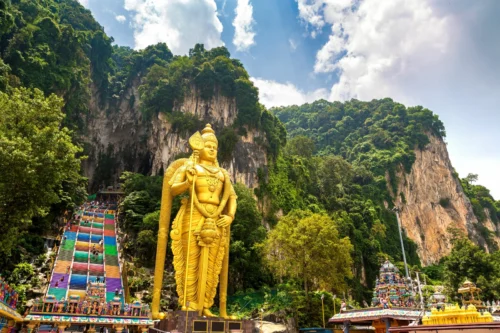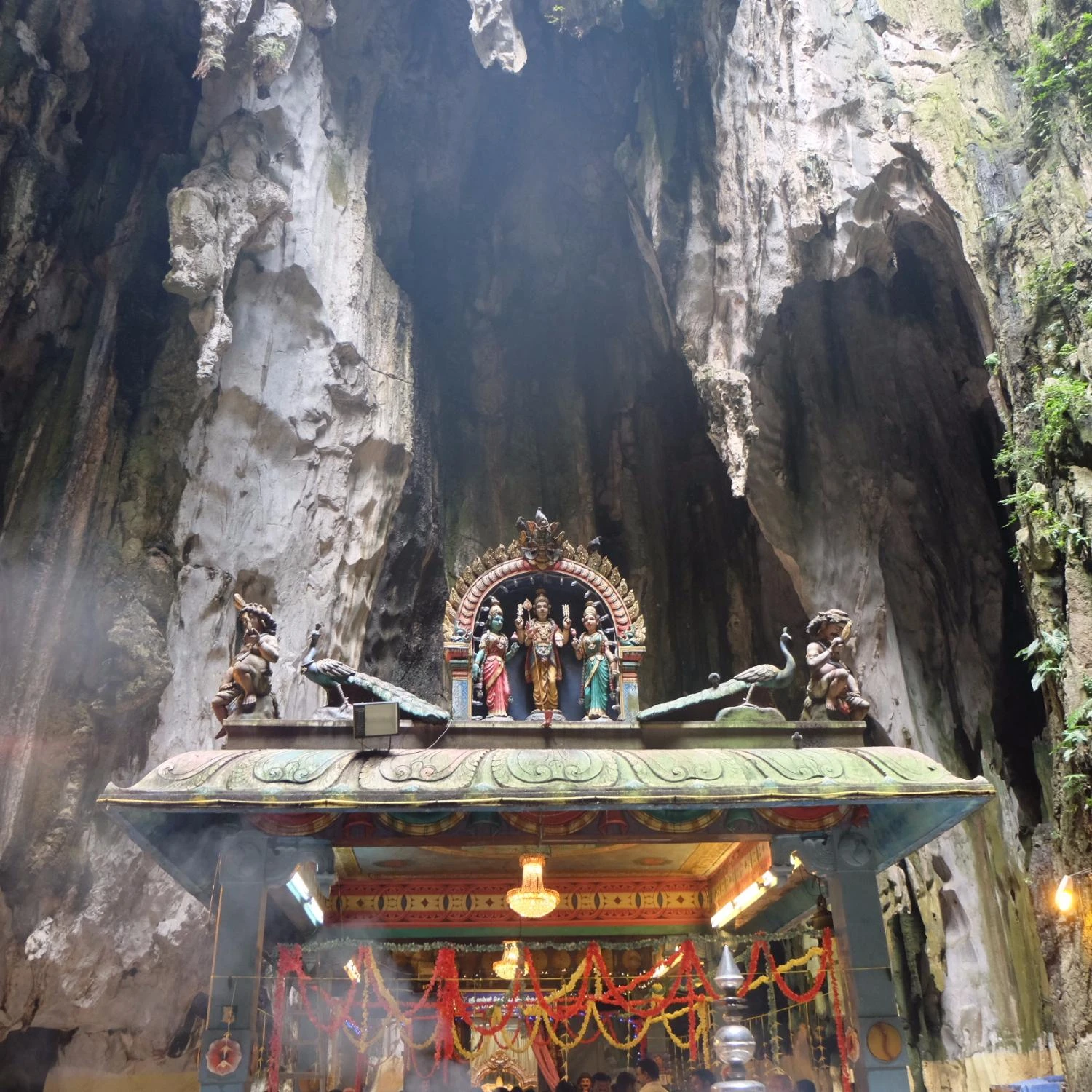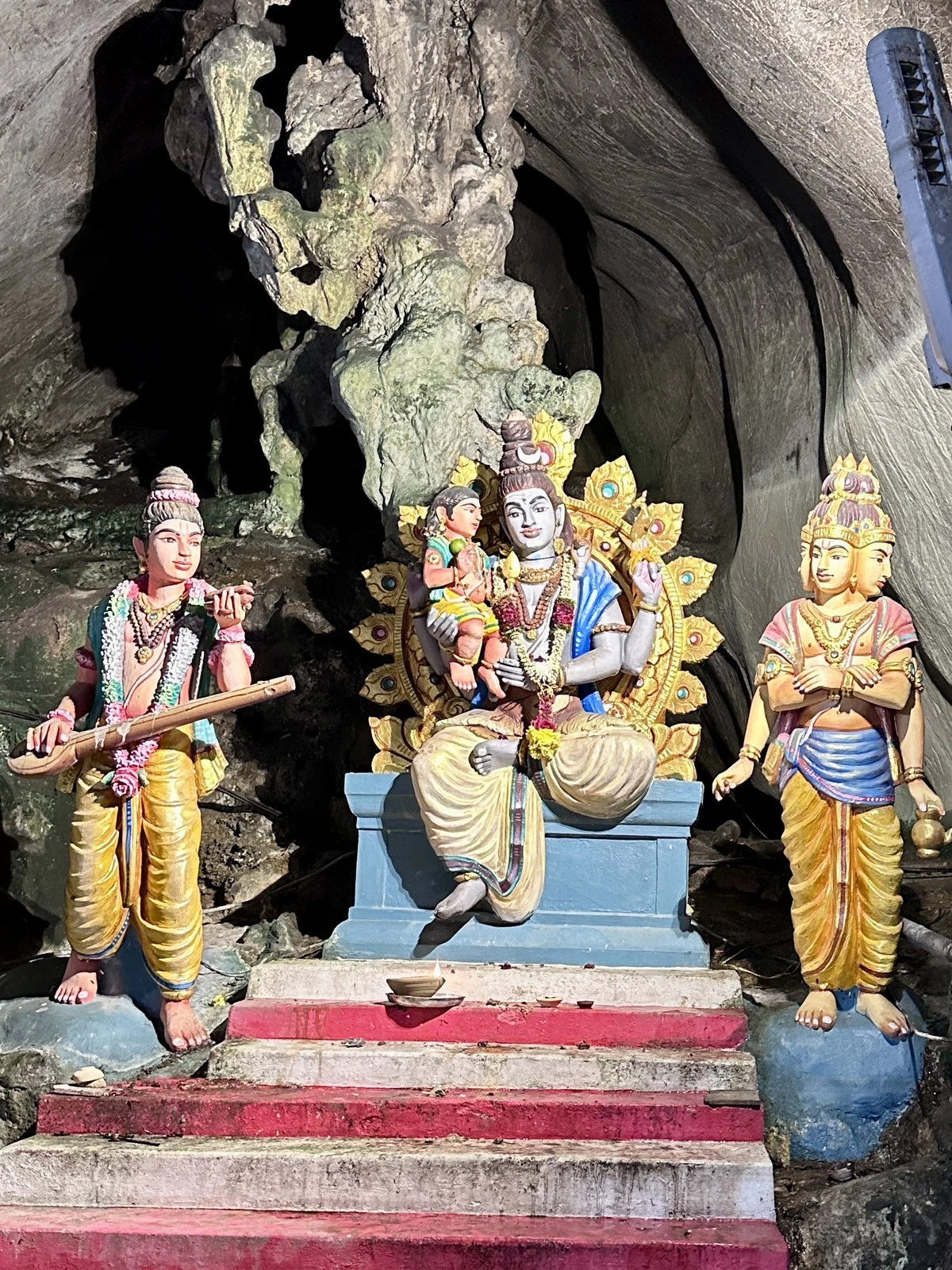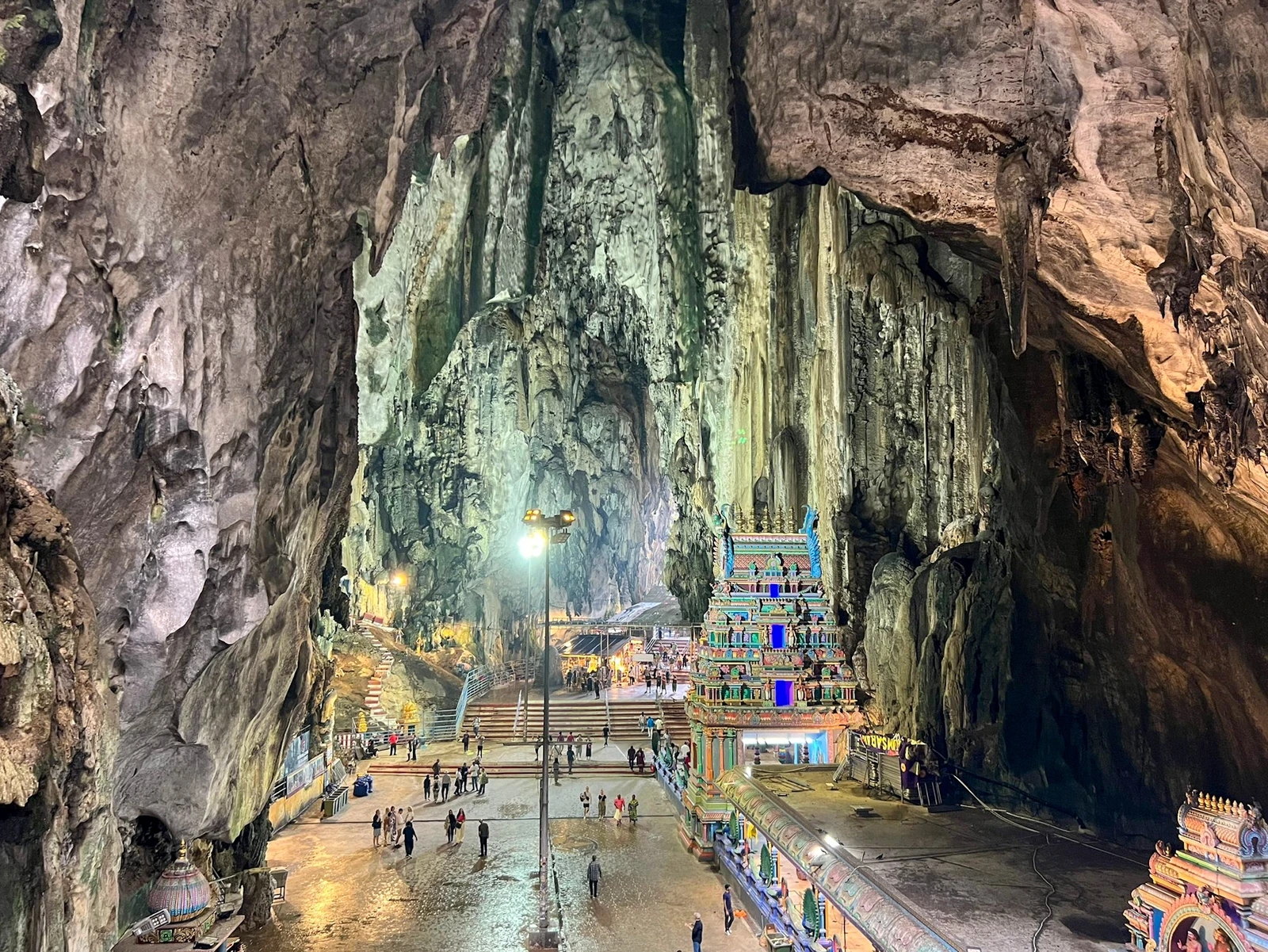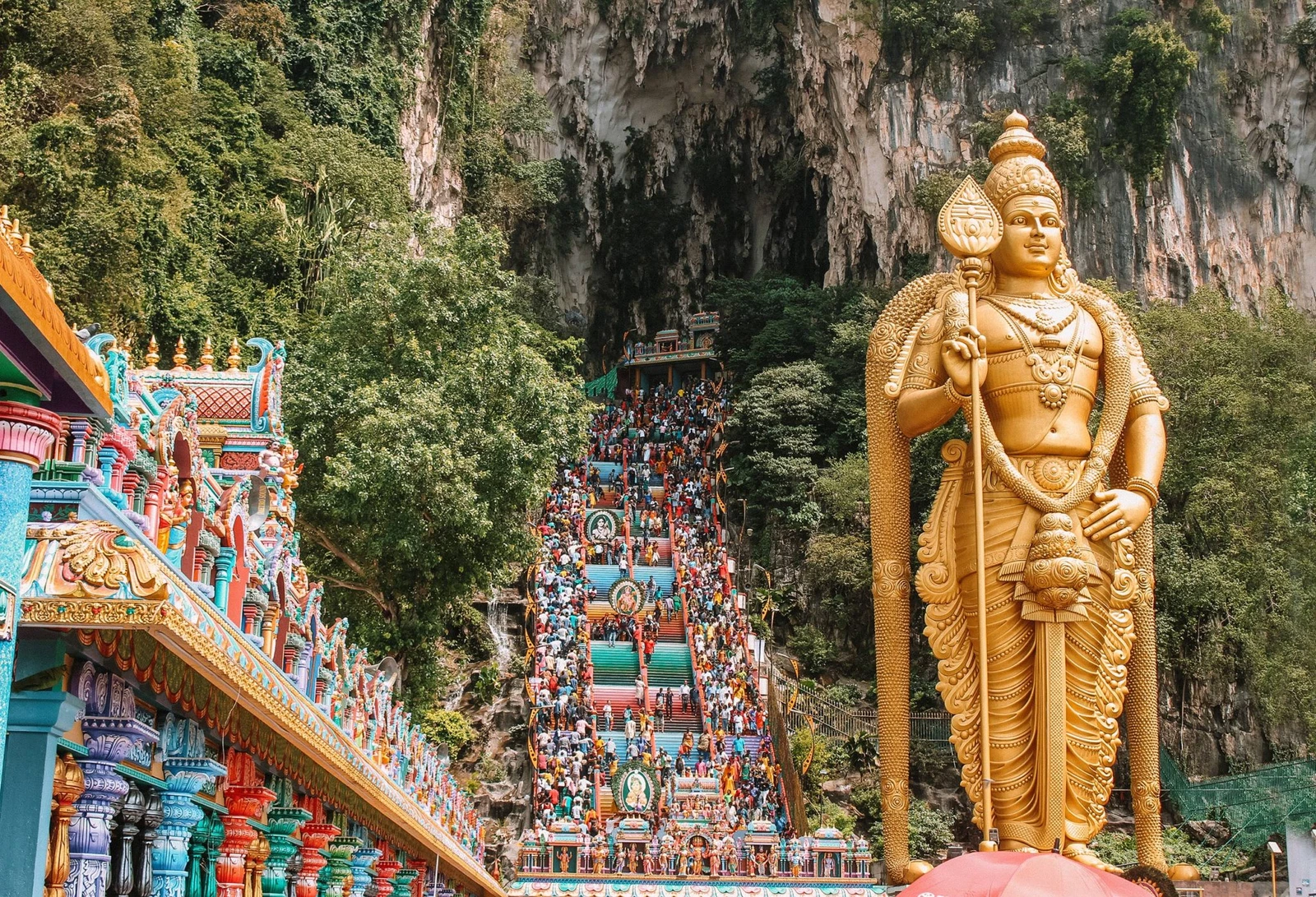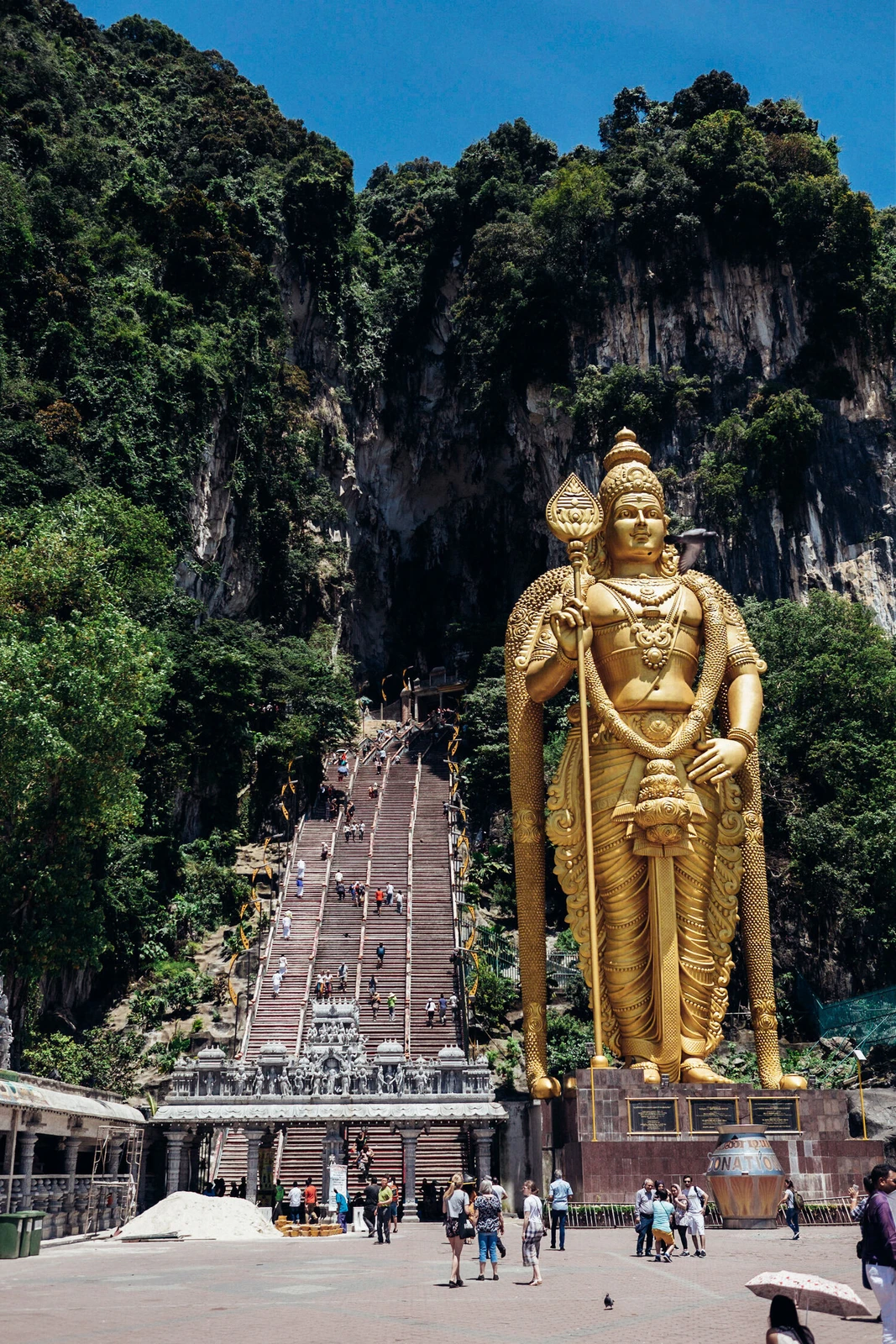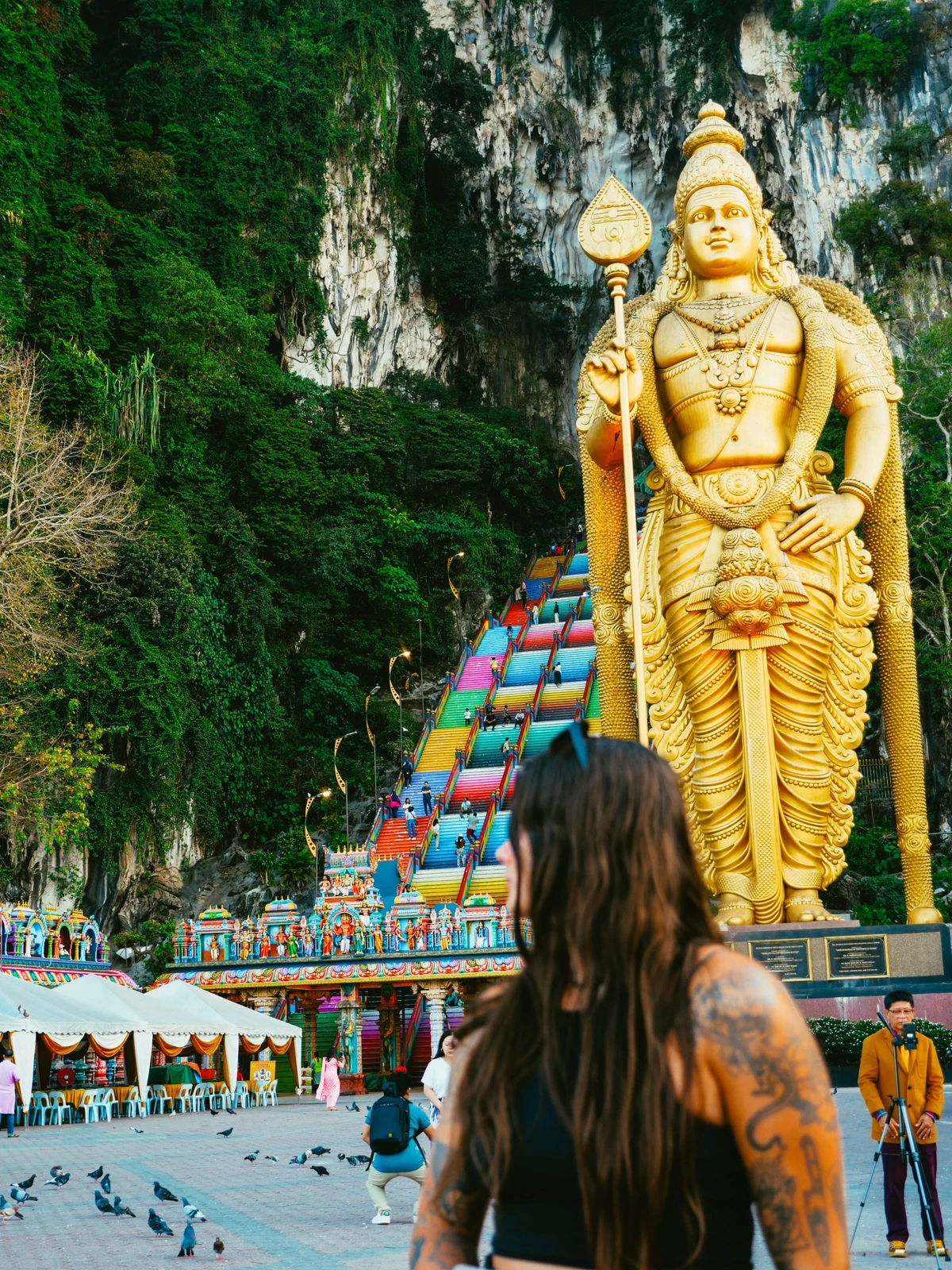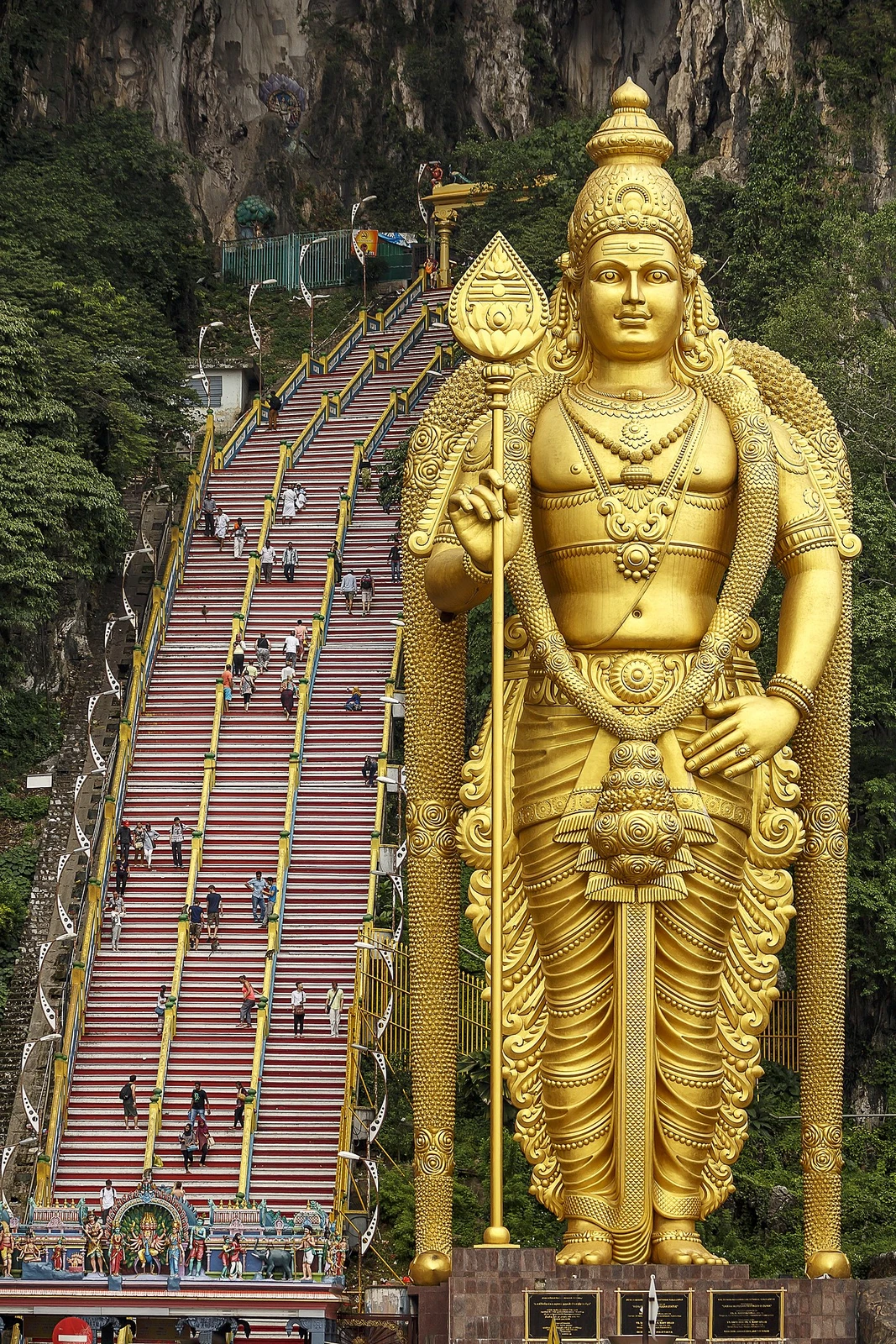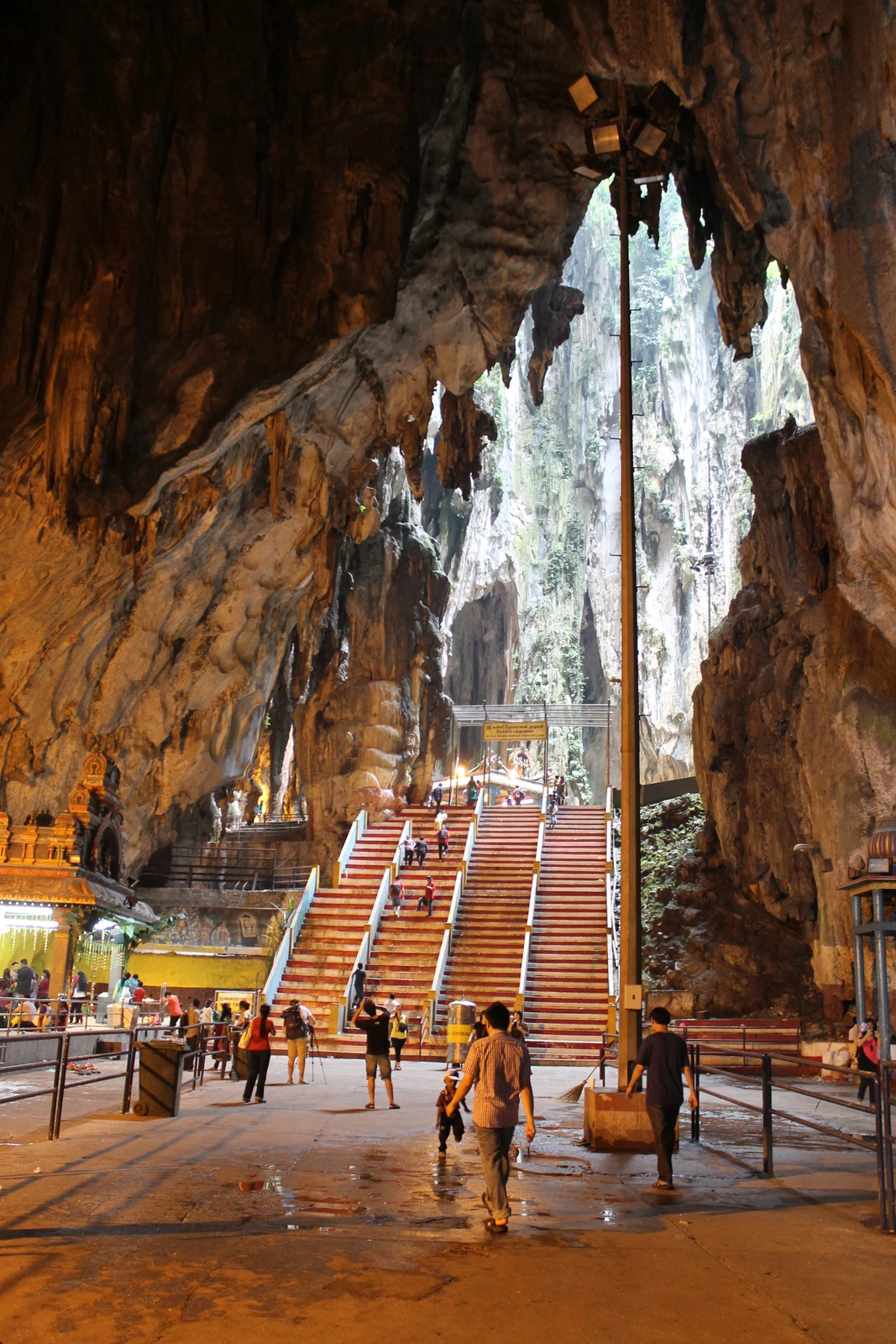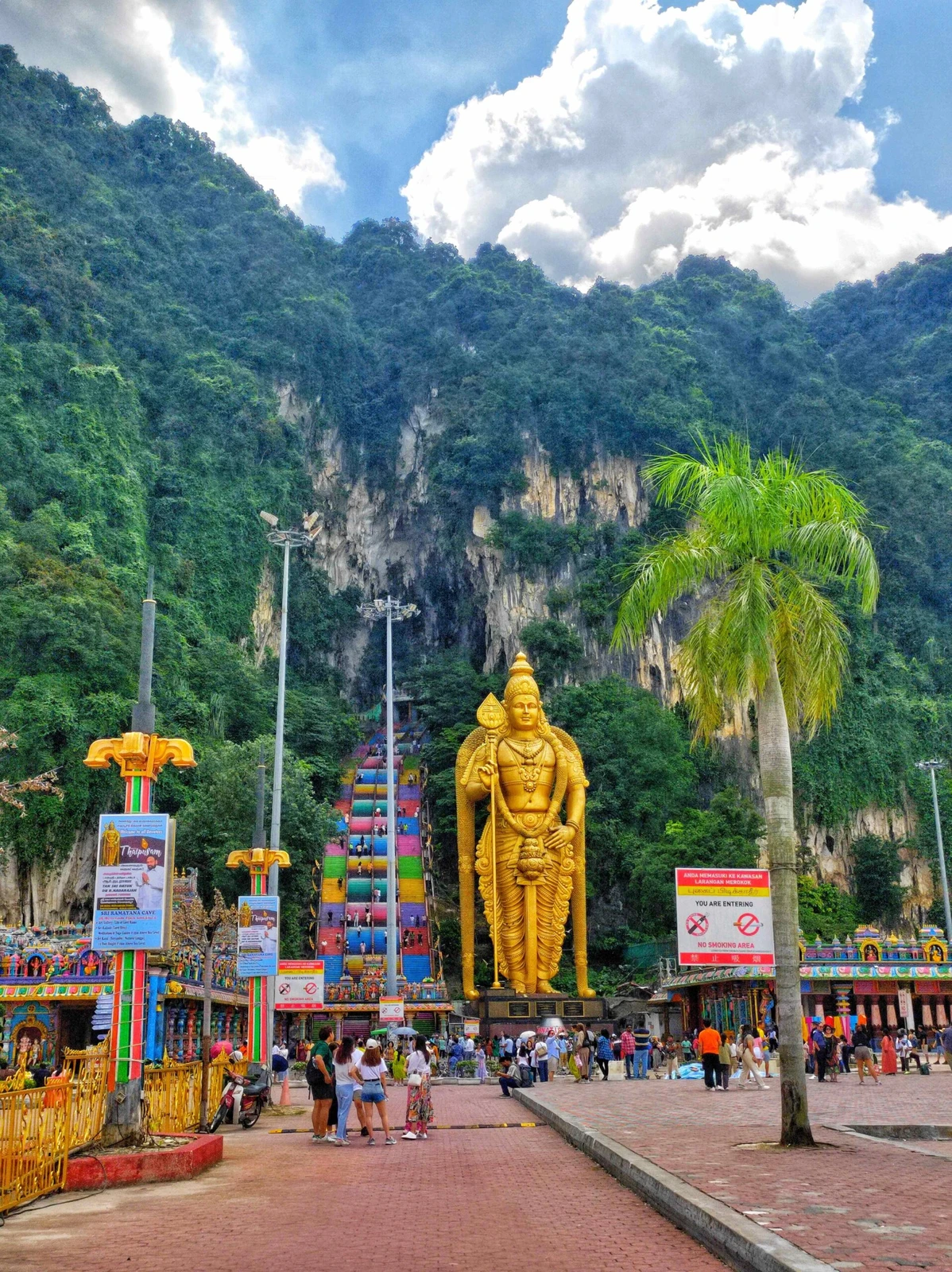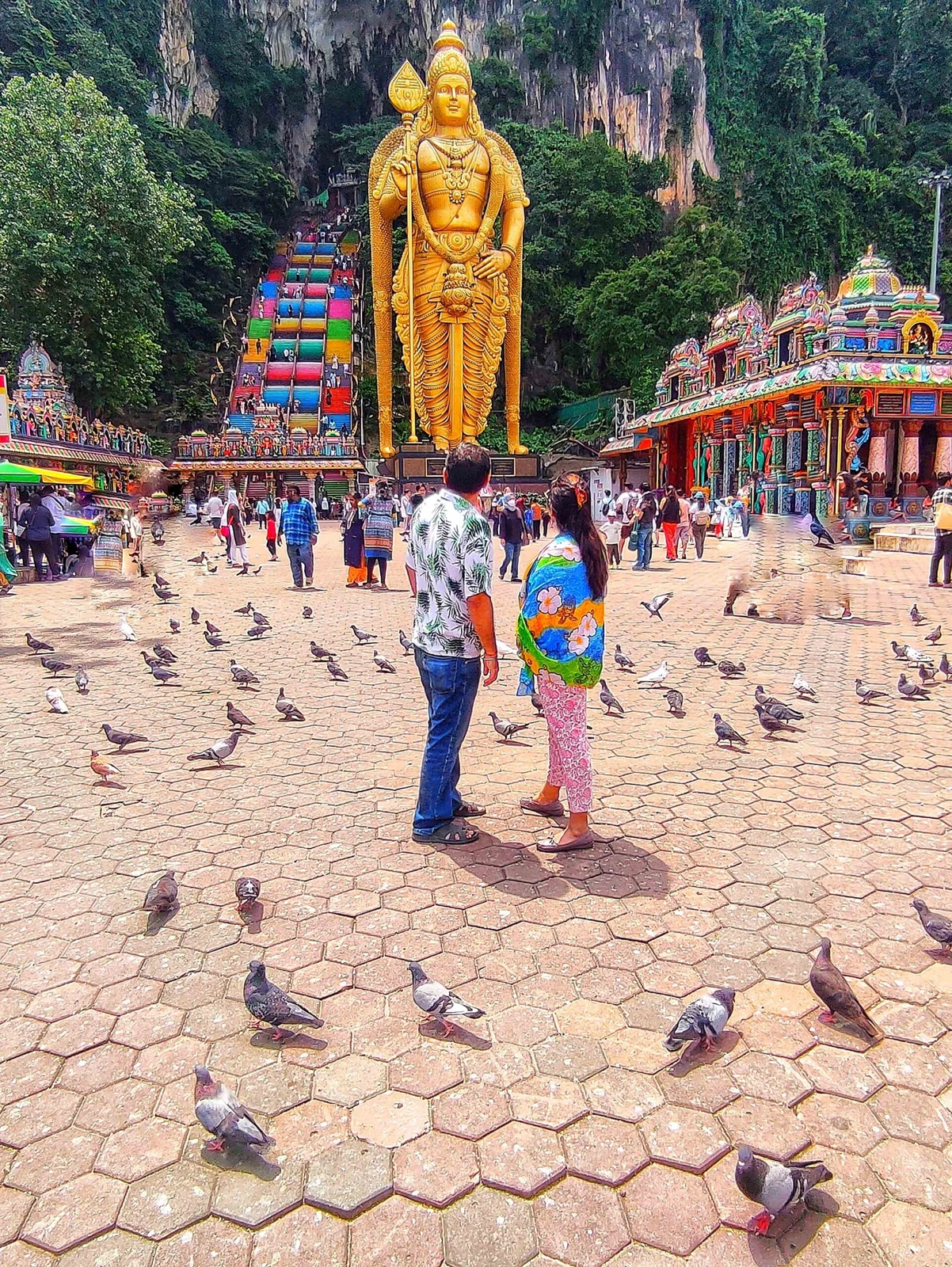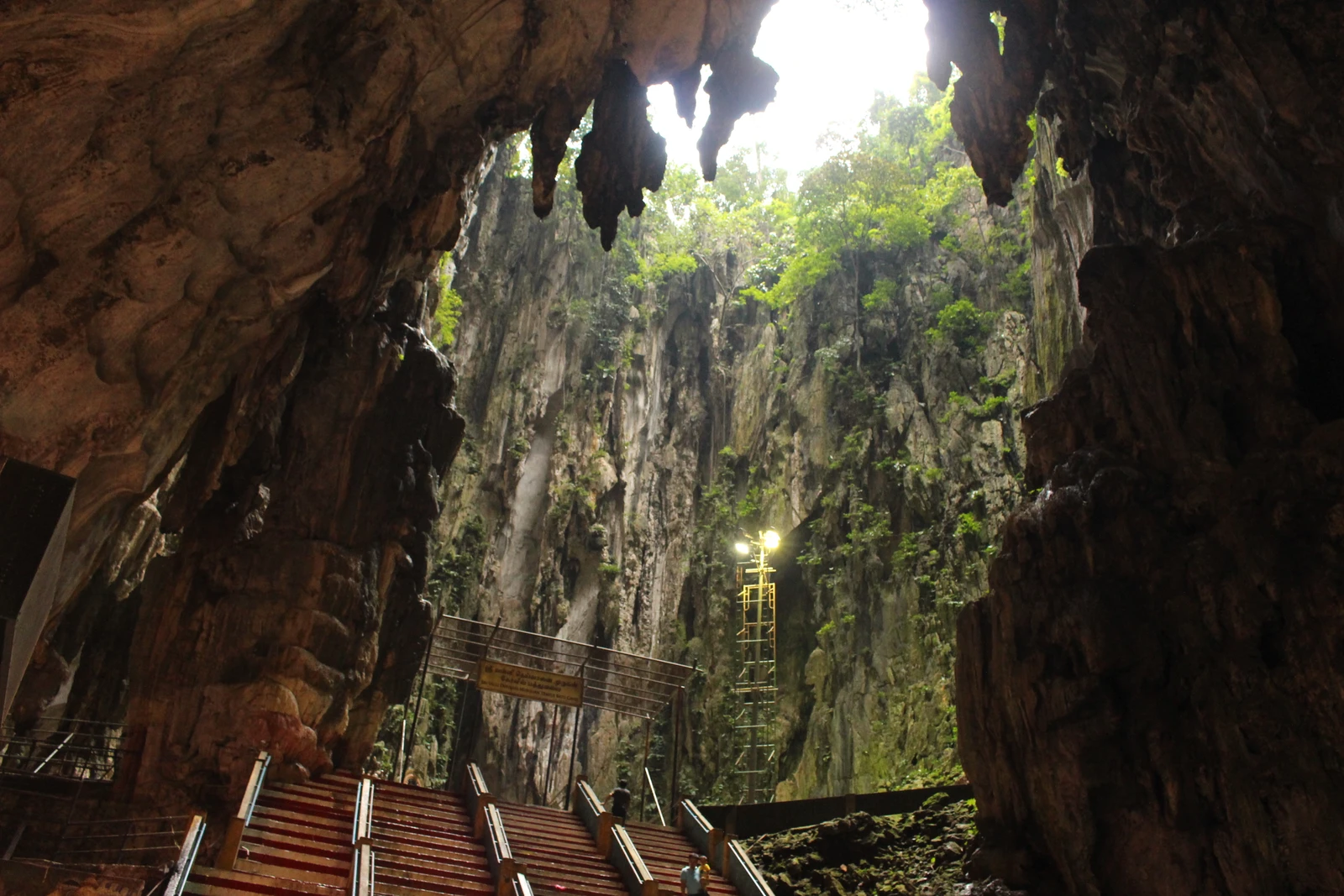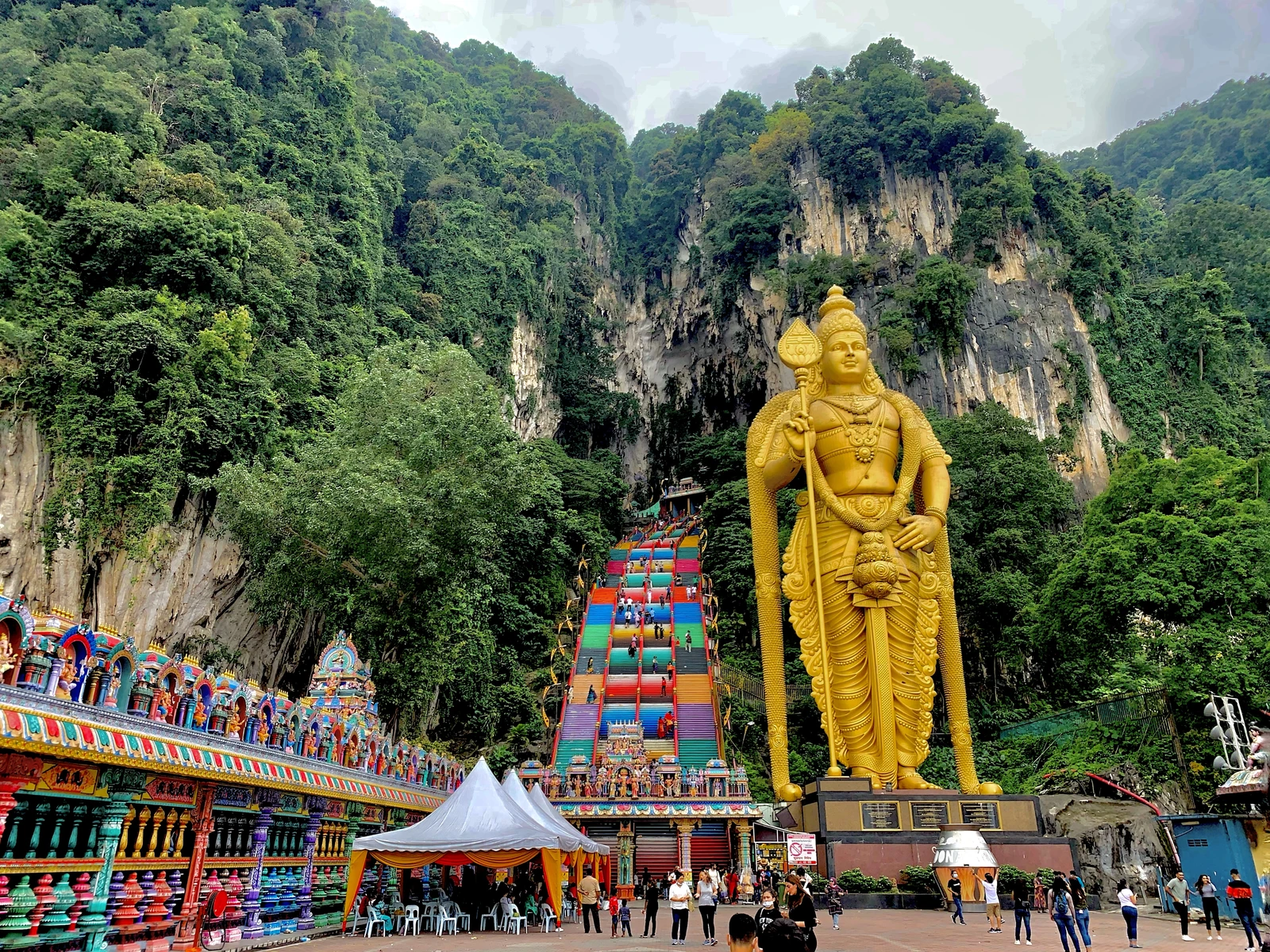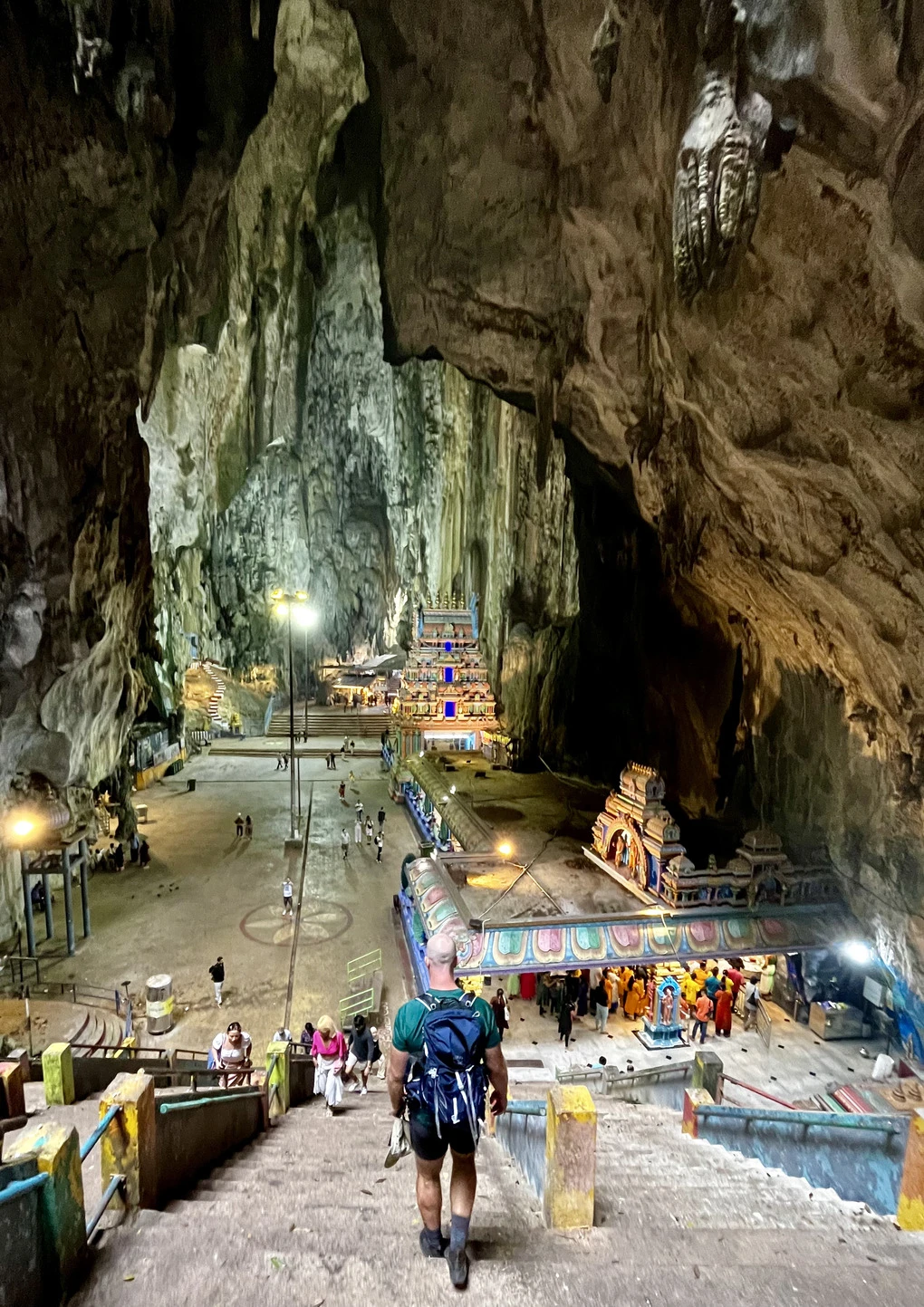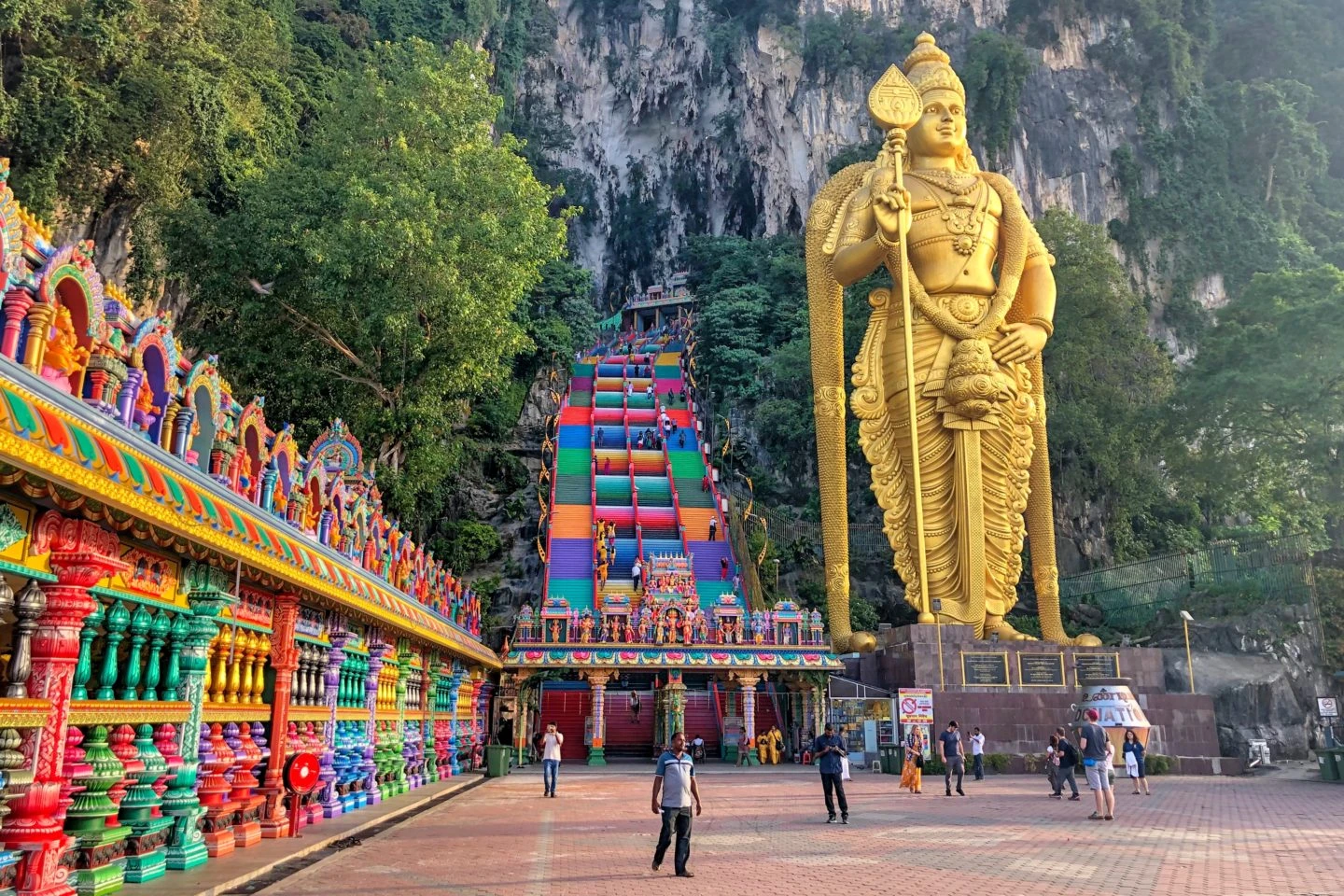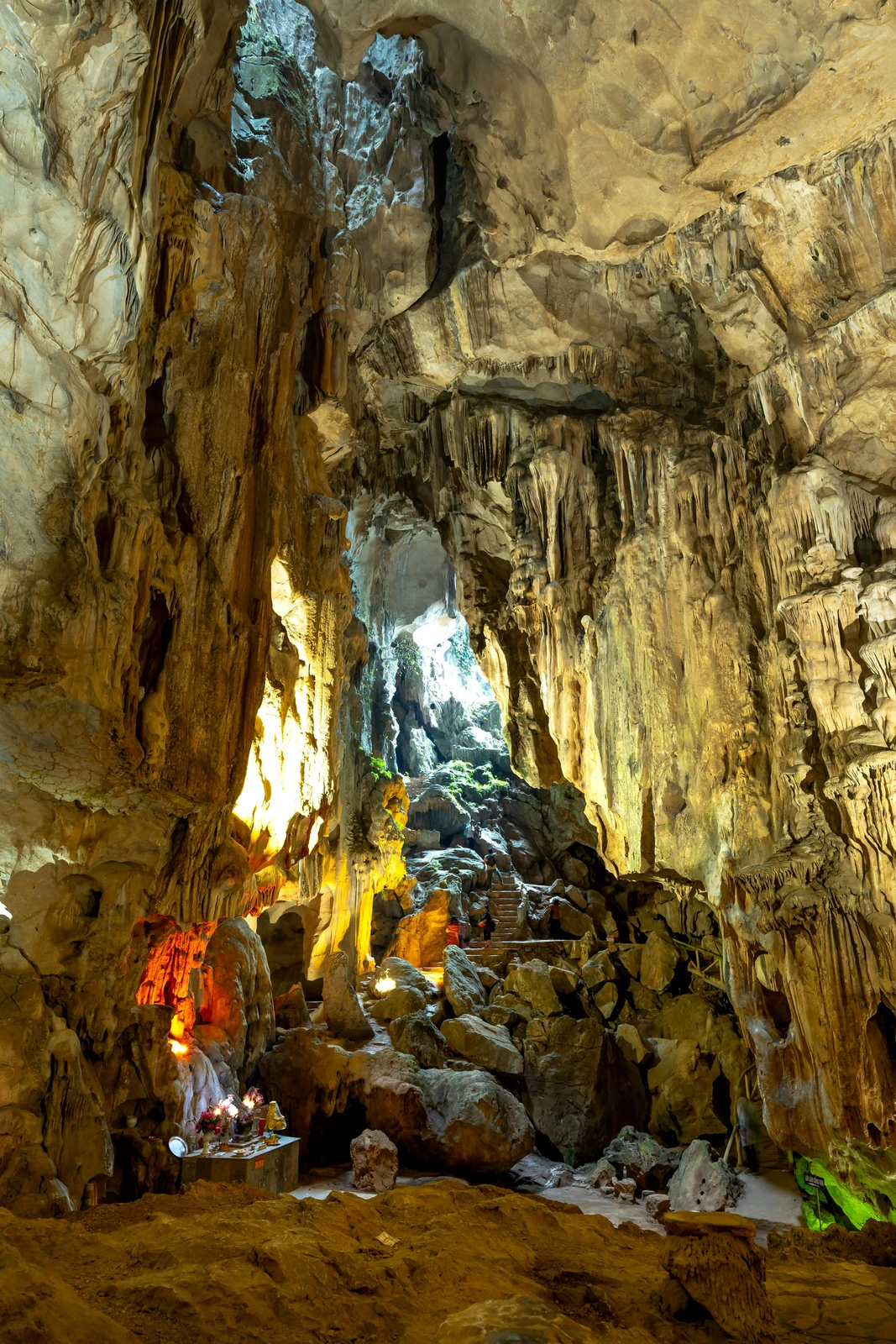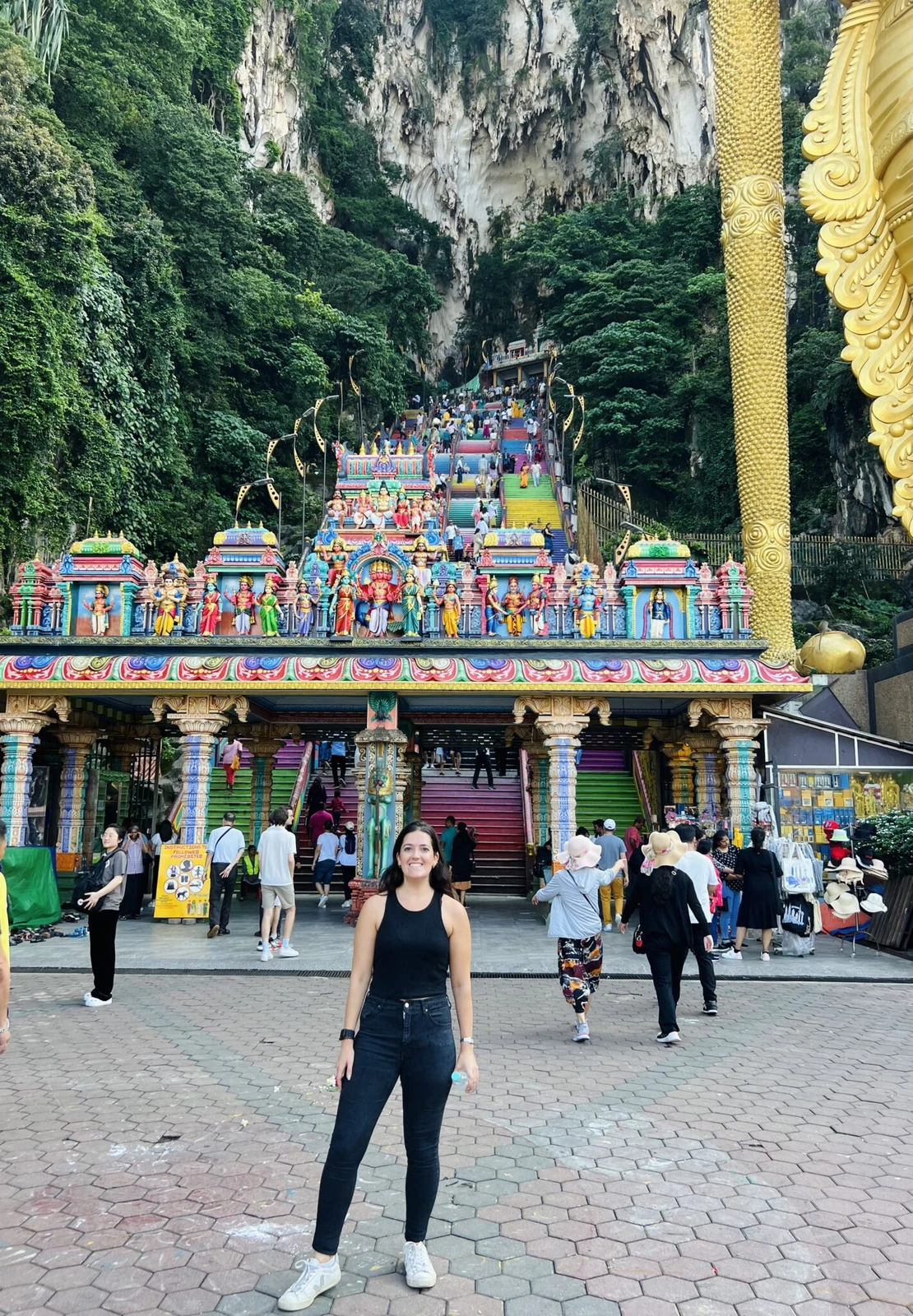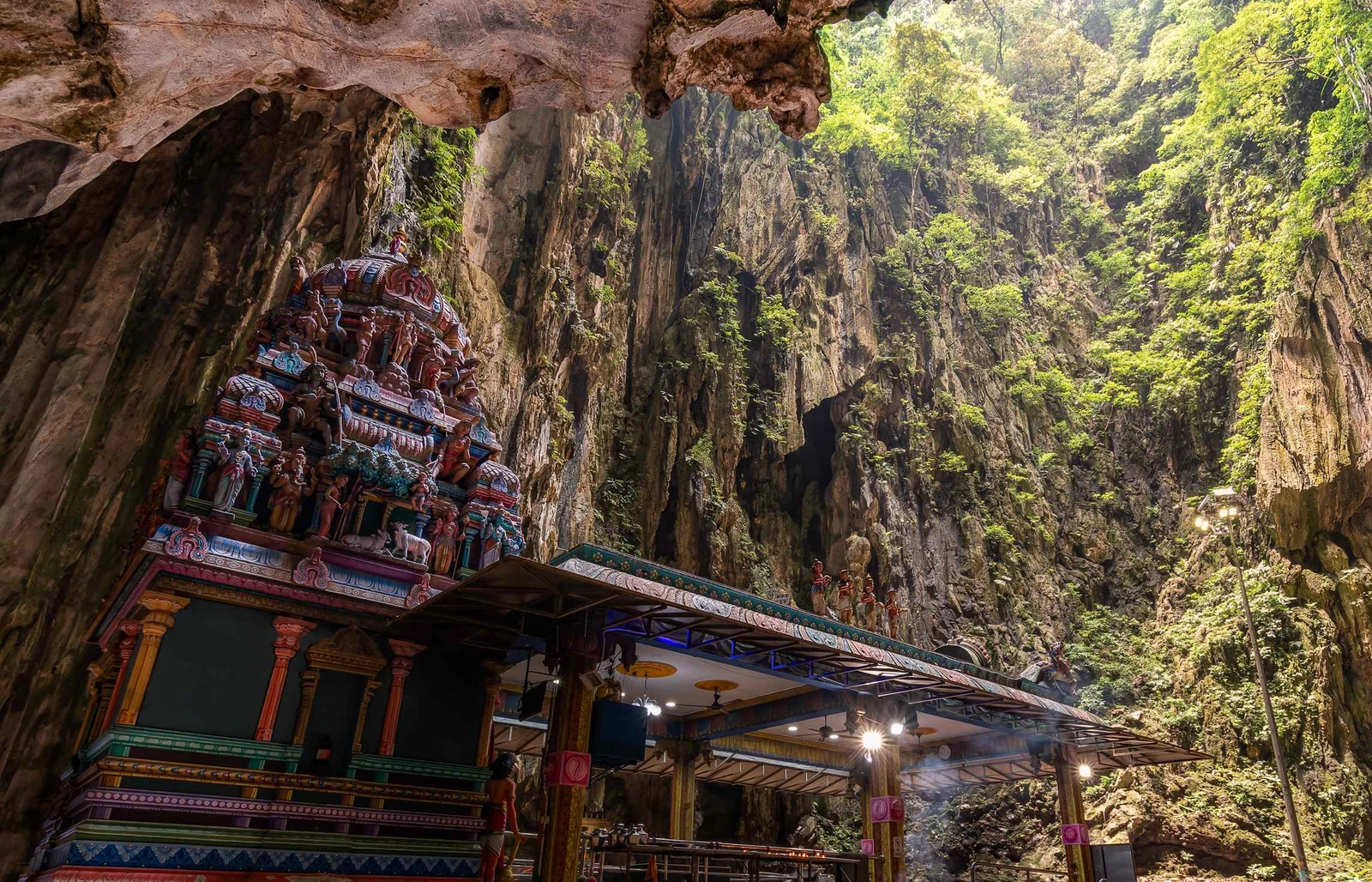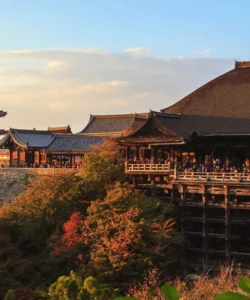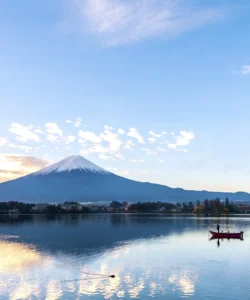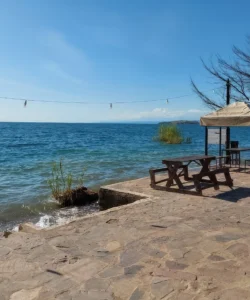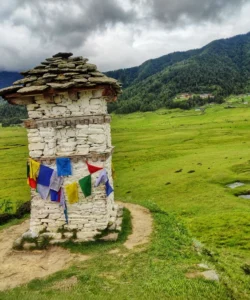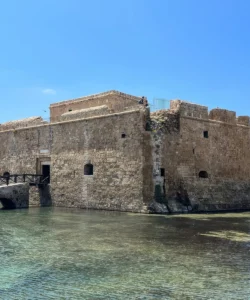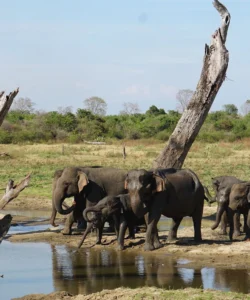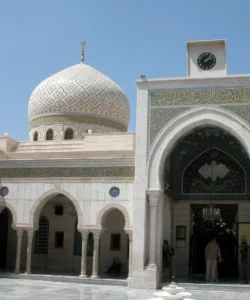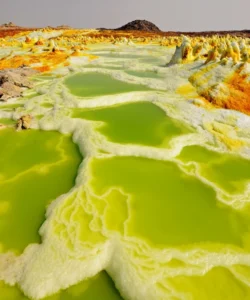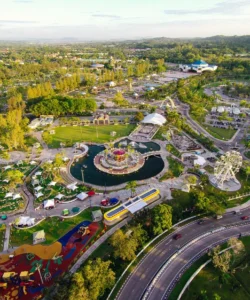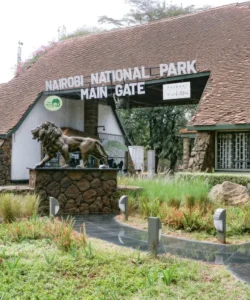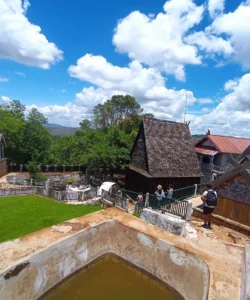Batu Caves is an iconic limestone hill comprising a series of caves and cave temples, located just north of Kuala Lumpur, Malaysia. It is one of the most significant Hindu pilgrimage sites outside of India, drawing millions of visitors and devotees annually.
Listen to an introduction about Batu Caves

Name: Batu Caves
Address: Gombak, 68100 Batu Caves, Selangor, Malaysia.
It is located approximately 13 kilometers (8 miles) north of Kuala Lumpur city center.
How to Get There:
Batu Caves is very accessible from Kuala Lumpur:
- By Train (KTM Komuter): This is the most convenient and recommended way. Take the KTM Komuter train (Seremban Line) from KL Sentral station directly to Batu Caves Komuter Station, which is right across from the cave complex. The journey takes about 30-45 minutes and is very affordable.
- By Car/Taxi/Ride-Sharing (Grab): Taxis and ride-sharing services are readily available from Kuala Lumpur. The drive takes around 20-30 minutes, depending on traffic.
- By Bus: RapidKL buses (e.g., No. 173 from Central Market or No. U6 from Titiwangsa Bus Terminal) also service the area, dropping you off near the entrance. The bus journey can take 45 minutes to an hour, subject to traffic.
- Guided Tours: Many tour operators in Kuala Lumpur offer half-day or full-day tours that include Batu Caves as a key stop, often combined with other city attractions.
Landscape and Architecture:
Batu Caves is a unique blend of natural geology and vibrant religious structures.
- Limestone Hill and Caves: The complex is set within a 400-million-year-old limestone hill (a “mogote”). It comprises several caves and caverns, formed over millennia by water movement. The most prominent is the Temple Cave (or Cathedral Cave), a massive cavern with a high vaulted ceiling and natural skylights, creating a dramatic atmosphere.
- The Golden Lord Murugan Statue: At the base of the hill, guarding the entrance to the main temple area, stands a towering 42.7-meter (140-foot) golden statue of Lord Murugan, the Hindu deity of war, victory, and wisdom. This is one of the tallest statues of a Hindu deity outside India and is an iconic symbol of the site.
- The Rainbow Staircase: Leading up to the Temple Cave are 272 steep concrete steps, famously repainted in vibrant rainbow colors in 2018. The climb offers stunning views of the surrounding area and is a highlight for many visitors.
- Other Caves and Temples:
- Ramayana Cave: Located to the left of the main ascent, this cave features colorful dioramas and statues depicting scenes from the Hindu epic Ramayana. Its entrance is marked by a 15-meter tall statue of the monkey god Hanuman.
- Cave Villa (Art Gallery Cave and Museum Cave): Situated at the foot of the hill, these caves house numerous Hindu statues and paintings, often depicting mythology. There’s also a koi pond and water garden.
- Dark Cave: Historically, this cave (located at the 204th step of the main staircase) was open for guided spelunking tours, known for its unique cave fauna (including an endangered spider) and intricate geological formations like stalactites and stalagmites. Its status for public access can vary, so it’s advisable to check current information.
- Monkeys: Long-tailed macaque monkeys are ubiquitous at Batu Caves, often seen scampering on the steps and around the temples, adding a lively (and sometimes mischievous) element to the visit.
What Makes It Famous:
- Hindu Pilgrimage Site: Batu Caves is one of the most important and popular Hindu shrines outside of India, dedicated primarily to Lord Murugan. It is the focal point of the annual Thaipusam festival in Malaysia, drawing hundreds of thousands of devotees who undertake elaborate acts of penance and devotion.
- Iconic Visuals: The combination of the colossal golden Lord Murugan statue, the vibrant rainbow staircase, and the majestic natural limestone caves creates a visually stunning and highly recognizable landmark, making it a popular subject for photography.
- Natural and Cultural Blend: It uniquely merges a significant natural geological wonder (the ancient limestone caves) with profound cultural and religious significance, offering visitors a multi-faceted experience.
- Accessibility: Its close proximity and easy accessibility from Kuala Lumpur make it a highly popular day trip for tourists.
- Spiritual and Adventurous: It appeals to both those seeking spiritual enrichment and those looking for an adventurous climb and exploration of natural caverns.
Differences from Some Other Wonders:
- Religious Focus within a Natural Landmark: While other natural wonders might have cultural or historical significance (like Sibebe Rock’s ancient rock art or Malolotja’s ancient geology), Batu Caves is distinct in being a major active Hindu pilgrimage site with ornate temples built directly within and around the natural cave system. This strong religious function sets it apart from purely scenic or geological attractions.
- Combination of Large Statue, Colorful Steps, and Caves: The specific combination of a towering, highly visible deity statue, a vividly painted and challenging staircase, and the natural limestone caves as a spiritual sanctuary is quite unique. Many religious sites are grand temples, but few are integrated so dramatically with such striking natural formations and a colorful, climbable pathway.
- Thaipusam Festival: The intensity and scale of the Thaipusam festival celebrated here, where devotees carry elaborate “kavadi” as acts of devotion, is a particularly distinguishing feature, attracting immense crowds and showcasing a profound cultural and religious spectacle.
- Active Wildlife (Monkeys): While animals are present in many natural wonders, the very visible and interactive population of macaque monkeys at Batu Caves, often seen climbing the stairs and interacting with visitors (sometimes a bit too eagerly), adds a memorable and often humorous dynamic that isn’t as central to other sites.
- Free Entry to Main Cave: Unlike many major tourist attractions or religious sites that charge a substantial entrance fee, entry to the main Temple Cave at Batu Caves is generally free (though donations are welcome and fees apply for some smaller caves or activities). This makes it a very accessible cultural experience.
